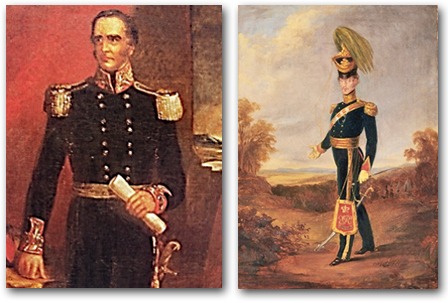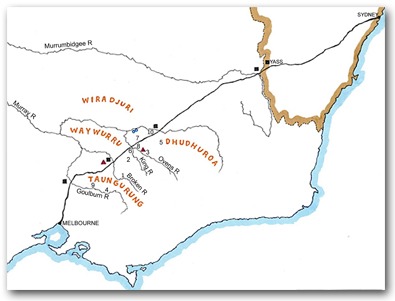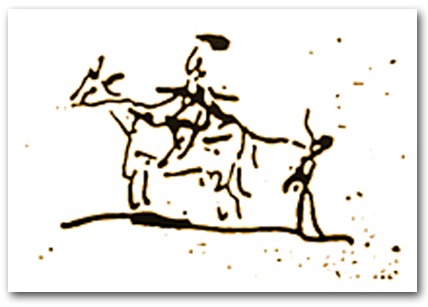INVESTIGATING DISPOSSESSION
CONFLICT & COEXISTENCE
A cleverly structured online resource that localises stories of the early interactions between colonists and First Nations Peoples in two parts.
 The first part invites readers to investigate the investigations that followed violent conflict at Broken River in 1838 and at Whorouly in 1840. The second part analyses the observations made by three shrewd witnesses on how the colonists and the First Nations People were learning to live together.
The first part invites readers to investigate the investigations that followed violent conflict at Broken River in 1838 and at Whorouly in 1840. The second part analyses the observations made by three shrewd witnesses on how the colonists and the First Nations People were learning to live together.
Just as Major Samuel Lettsom was on his infamous mission in 1840, readers are set the task of obtaining ‘authentic information of the actual state of the district between Yass and the Goulburn River, and to ascertain the nature of the communications which are kept up between the settlers and the blacks.’
Authentic information? Both parts of the resource operate on two levels. They unravel stories of early post-contact interactions, and, at the same time, they draw attention to complications of evidence-based storytelling. The resource includes newspaper reports, squatters and stockmen memory pieces, letters by Lady Franklin to her husband, the musings of George August Robinson in his personal journals, and the drawings Tommy McRae made to tell of olden times and of his present day.
There is a community readiness to explore local stories of dispossession. What is more, State and National governments are sharpening curriculum requirements for all students to learn about First Nations Peoples’ experiences of colonisation. This online resource will help school and community historians with that endeavour.
Cover Publication information, orientation map, contents
Publication information, orientation map, contents
Click on the link: Cover
Introduction Introduction People and Place Picture Prompts, pp 1- 27.
Introduction People and Place Picture Prompts, pp 1- 27.
Click on the link: Introduction
Investigation One Claims of territory at and after a ‘most furious attack’ at Broken River, 1838-1839, resistance and reprisals, pages 29-43.
Claims of territory at and after a ‘most furious attack’ at Broken River, 1838-1839, resistance and reprisals, pages 29-43.
Click on the link: Broken River
Investigation Two Claims of territory at and after a ‘grand attack’ at Whorouly, 1840-1844, resistance and reprisals, pages 45-72.
Claims of territory at and after a ‘grand attack’ at Whorouly, 1840-1844, resistance and reprisals, pages 45-72.
Click on the link: Whorouly
Investigation Three Negotiating Coexistence, pages 73-104.
Negotiating Coexistence, pages 73-104.
Click on the link: Negotiating Coexistence
Conclusion Remembering violence and coexistence at public memory places, pages 105-117.
Remembering violence and coexistence at public memory places, pages 105-117.
Click on the link: Conclusion
